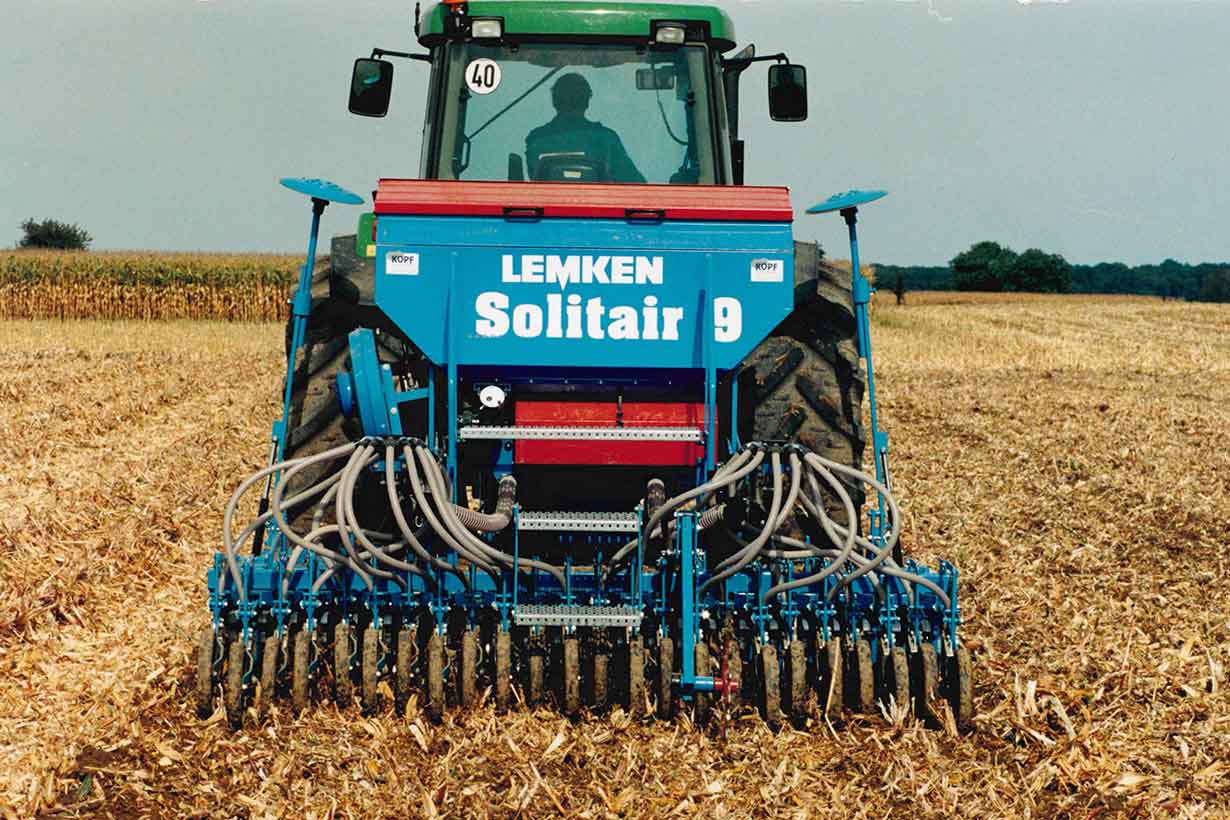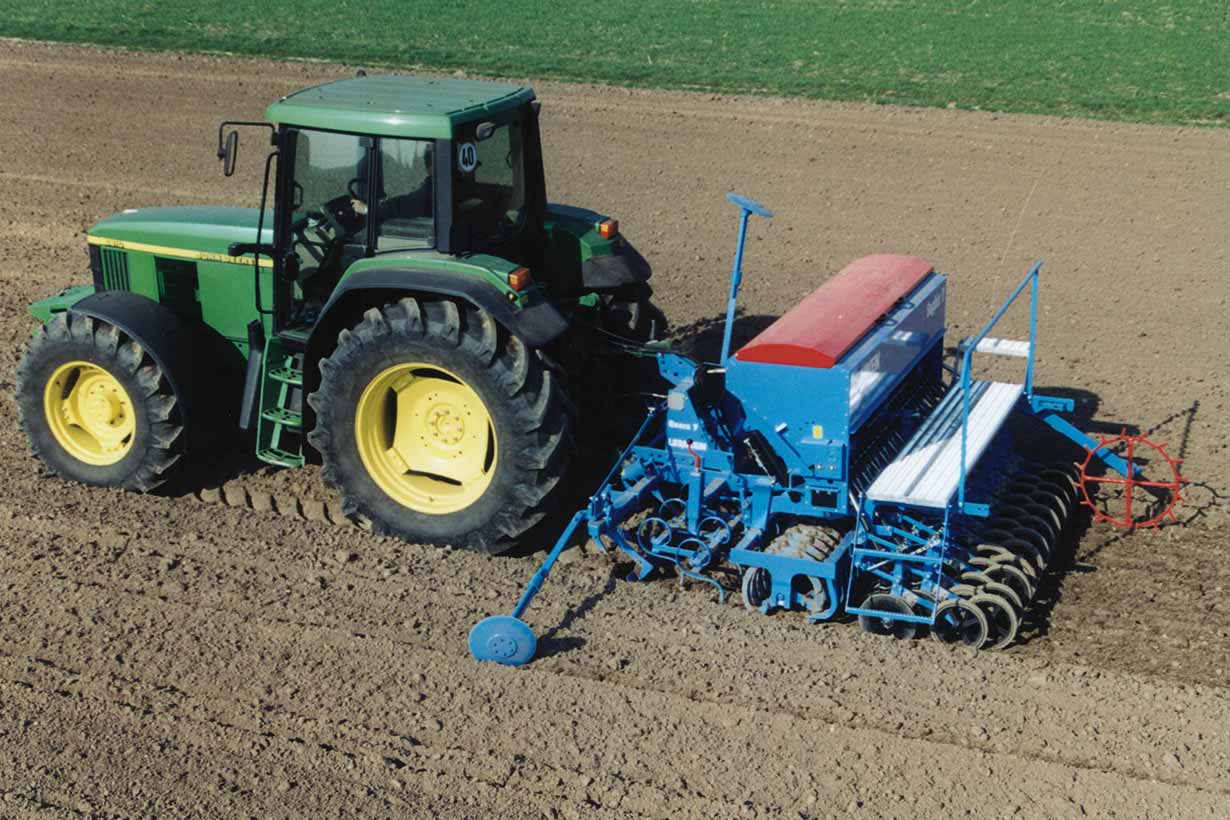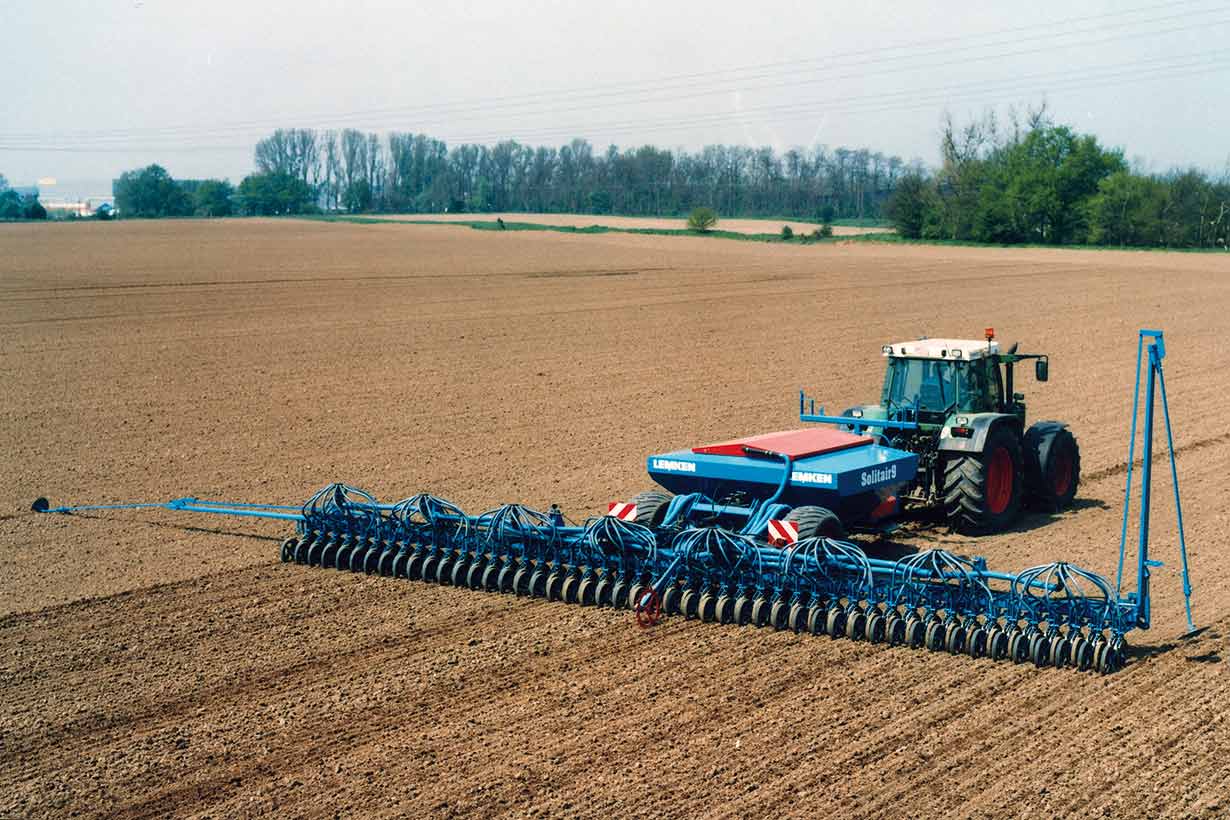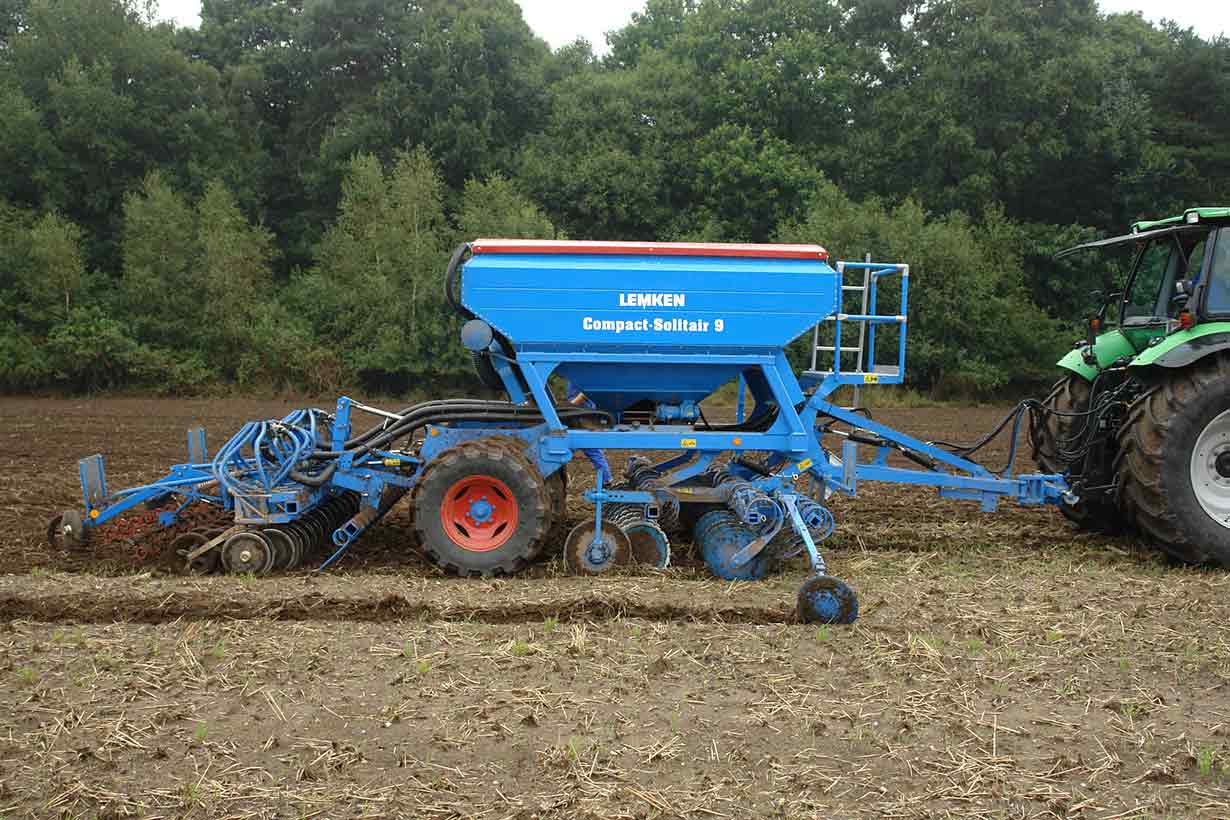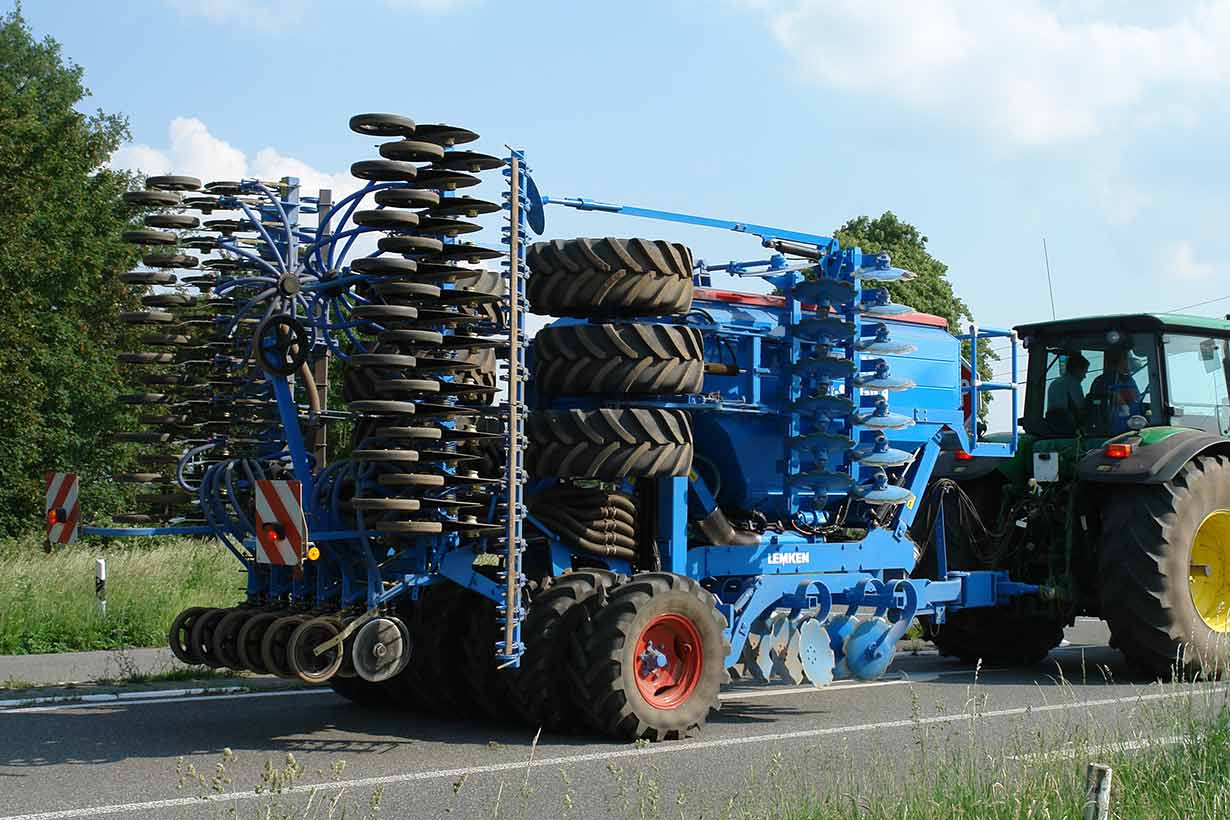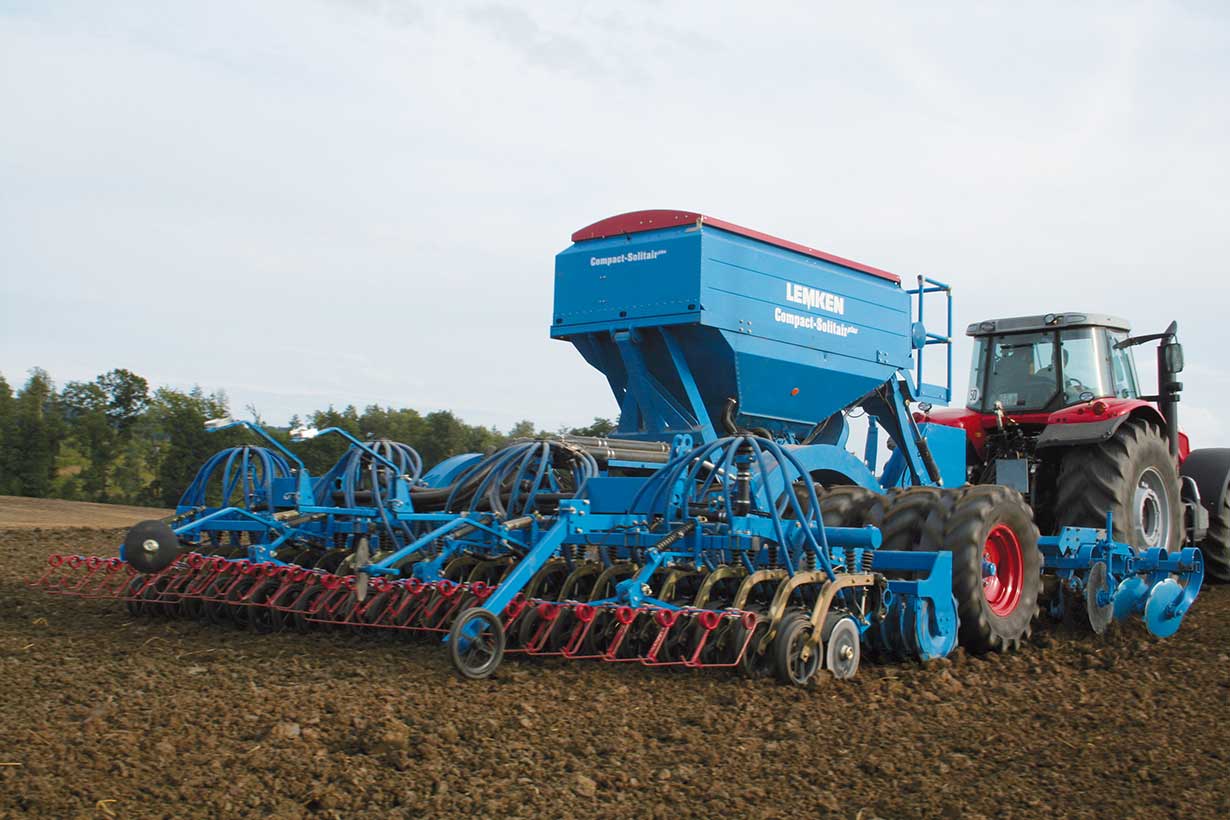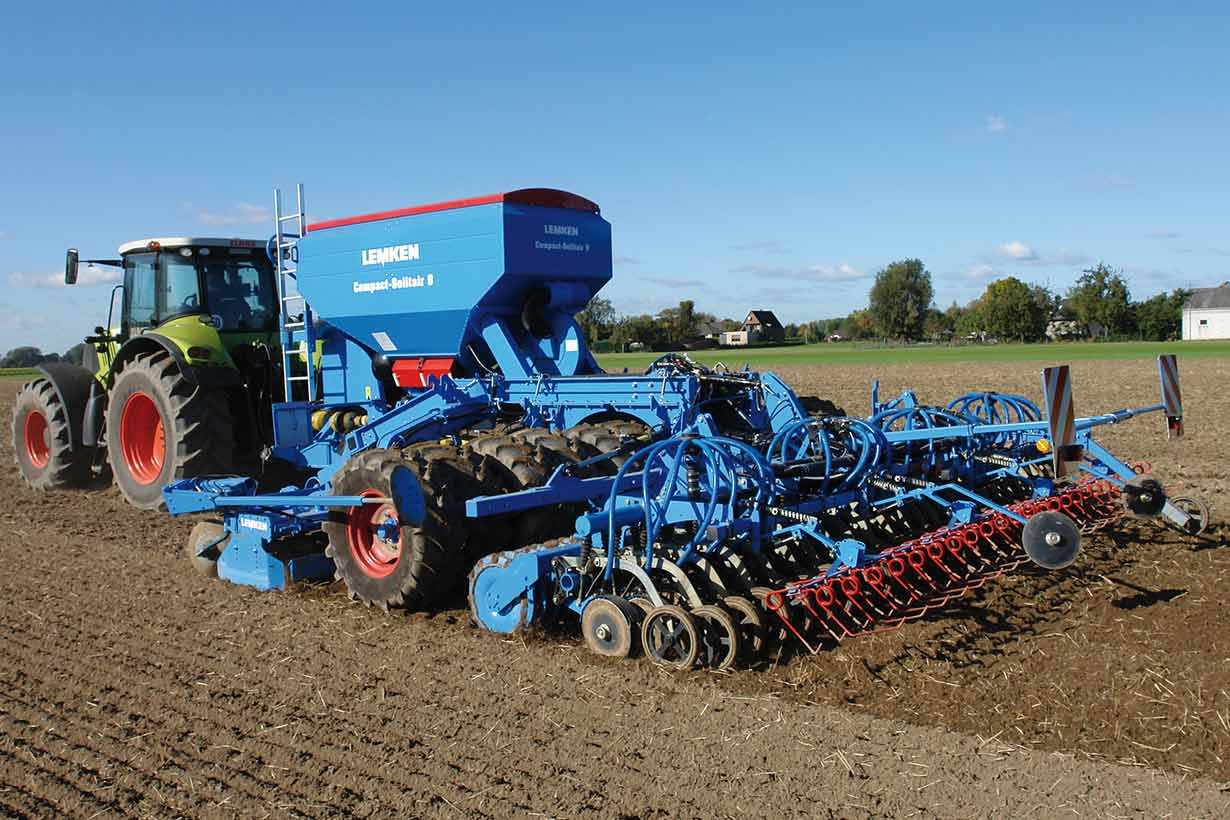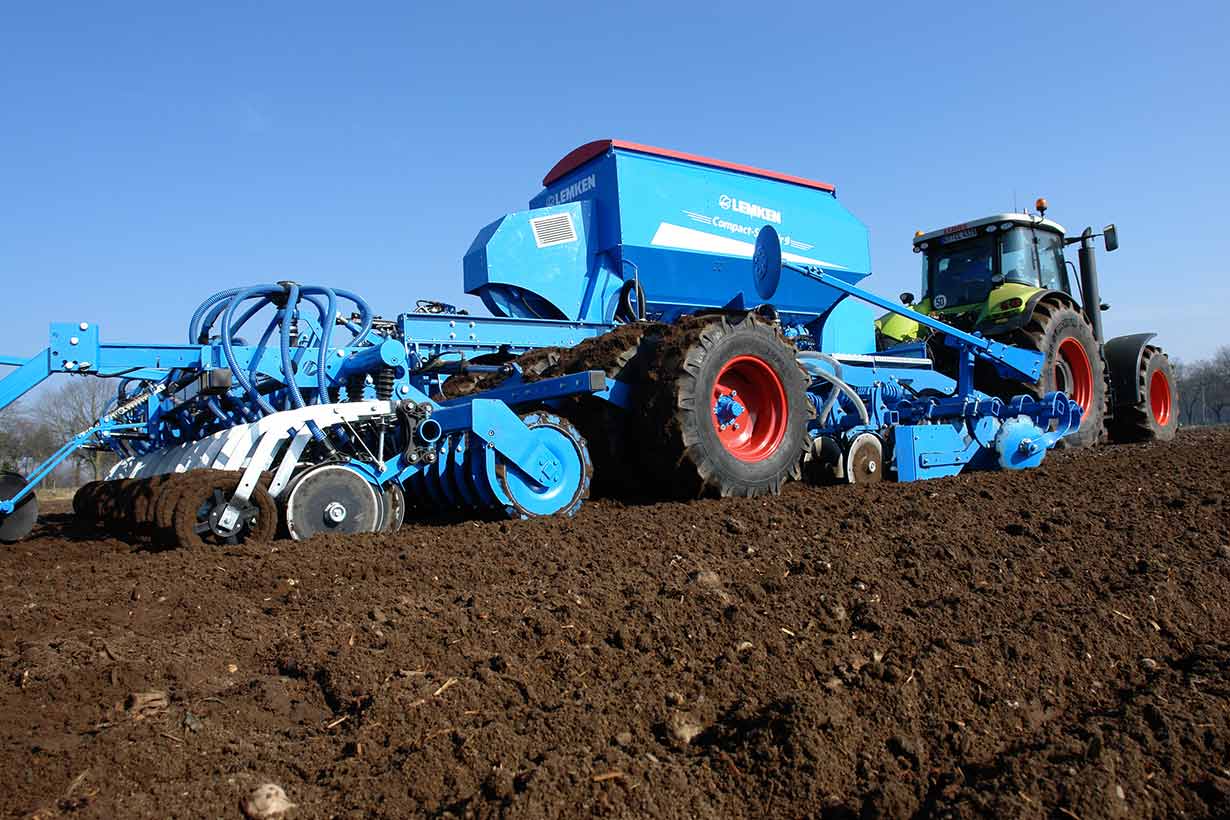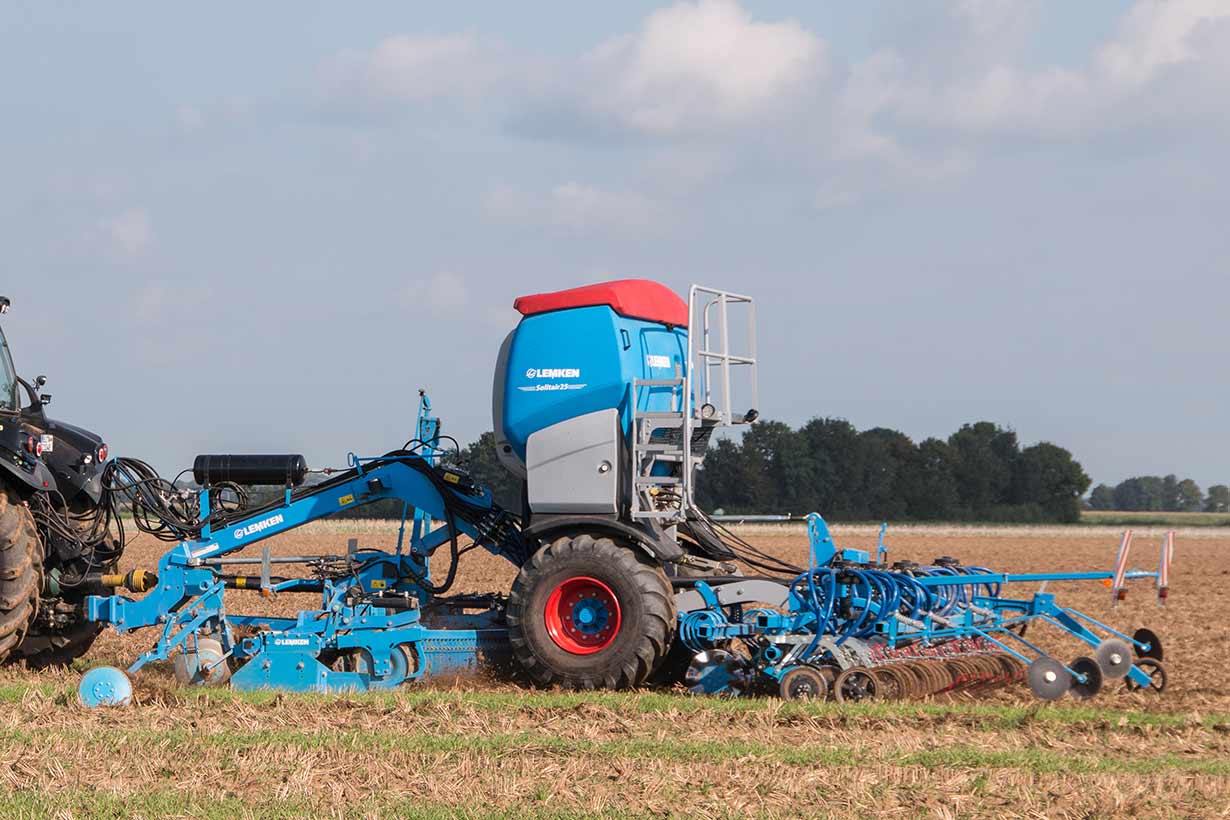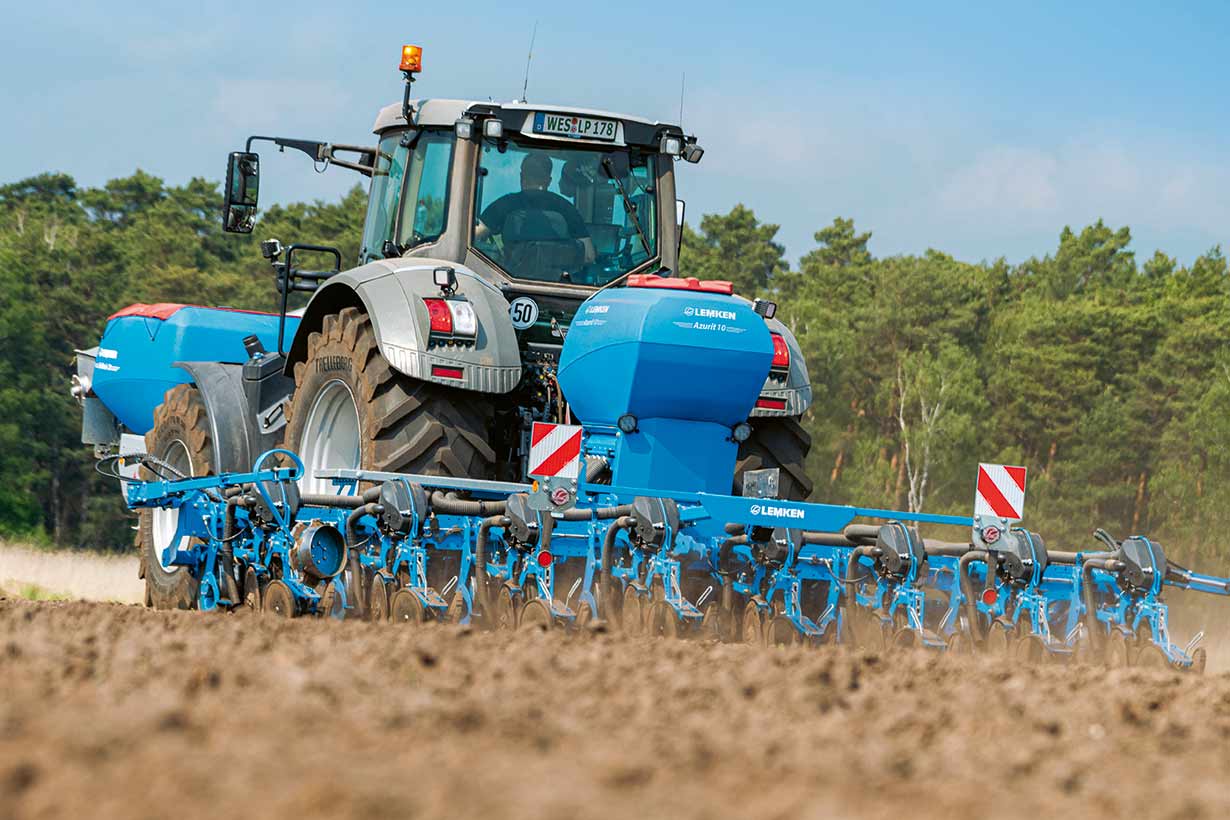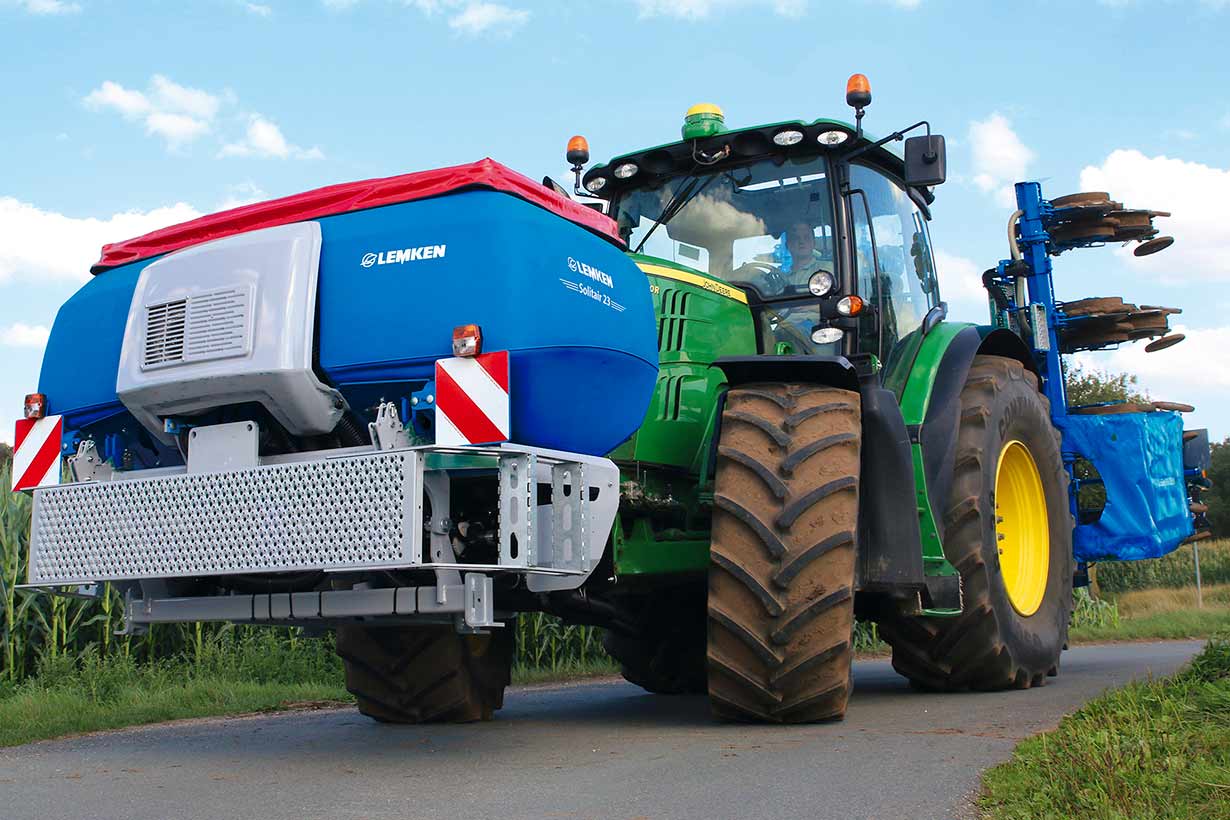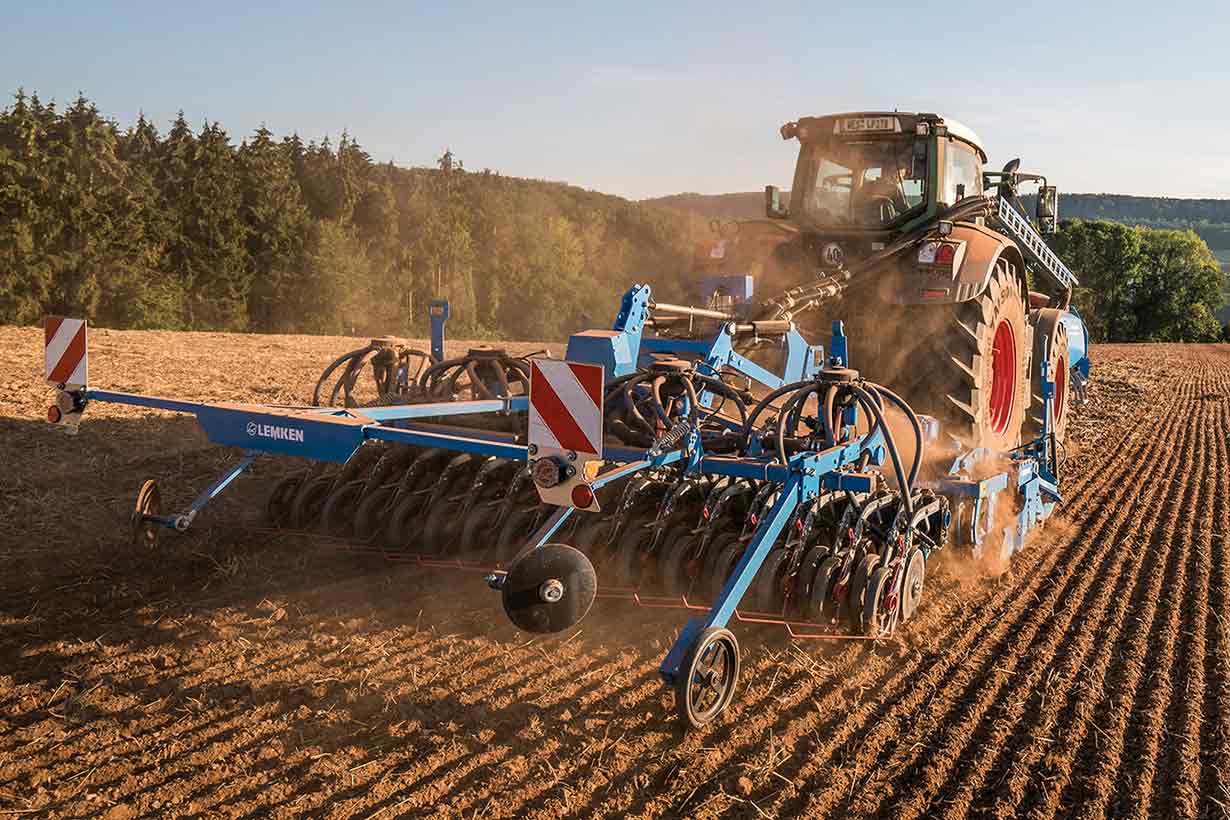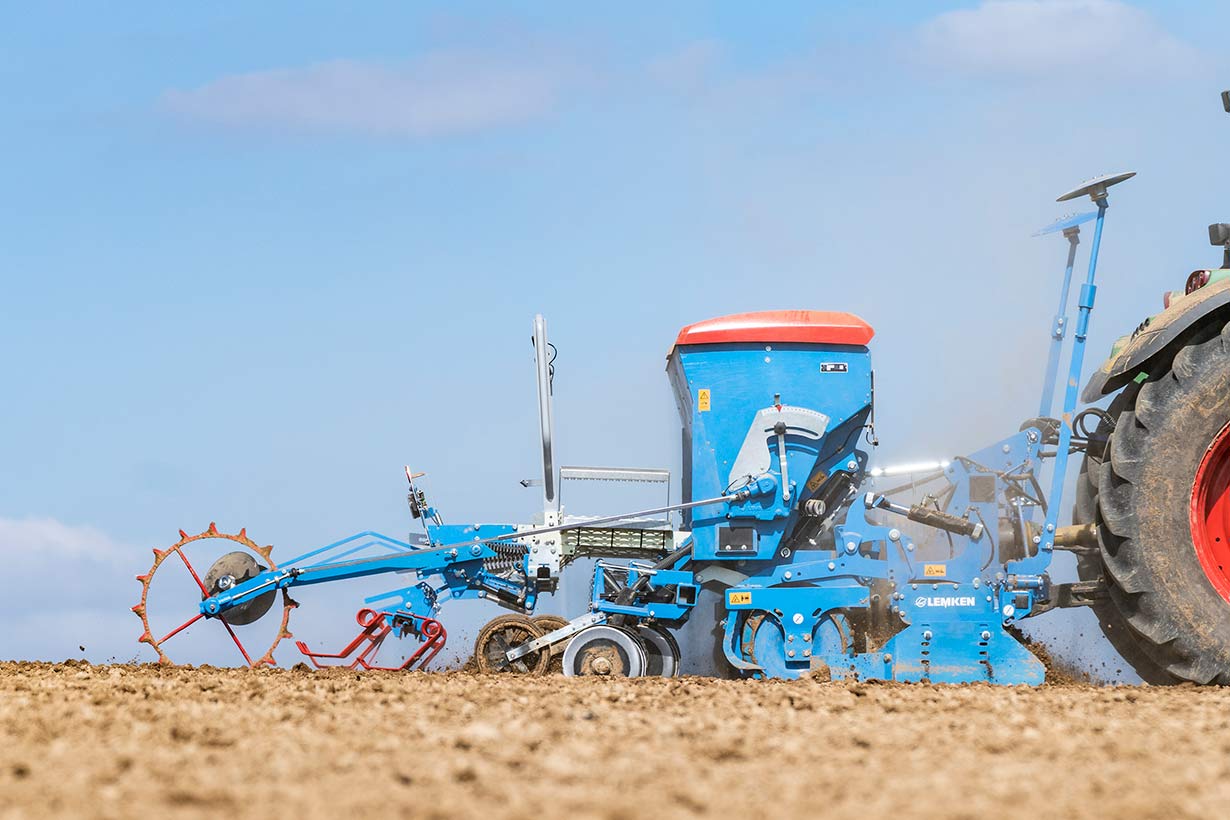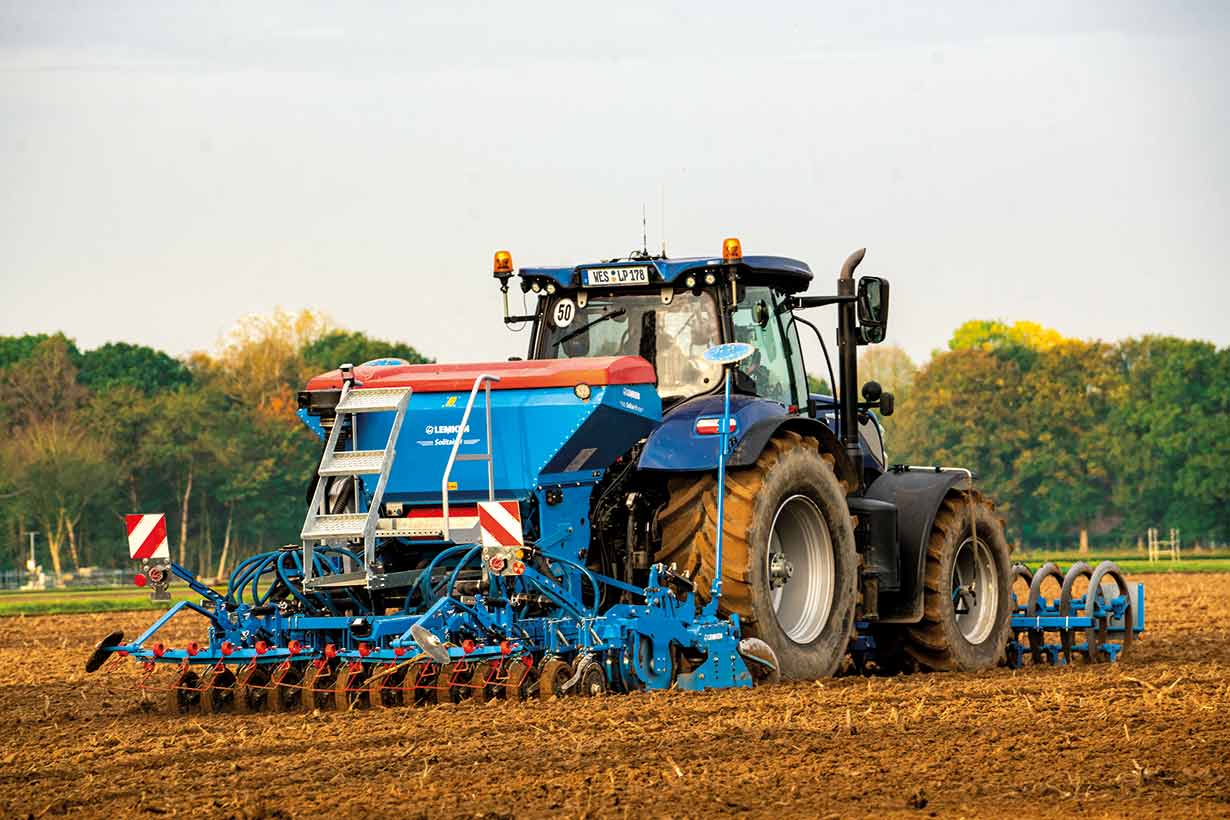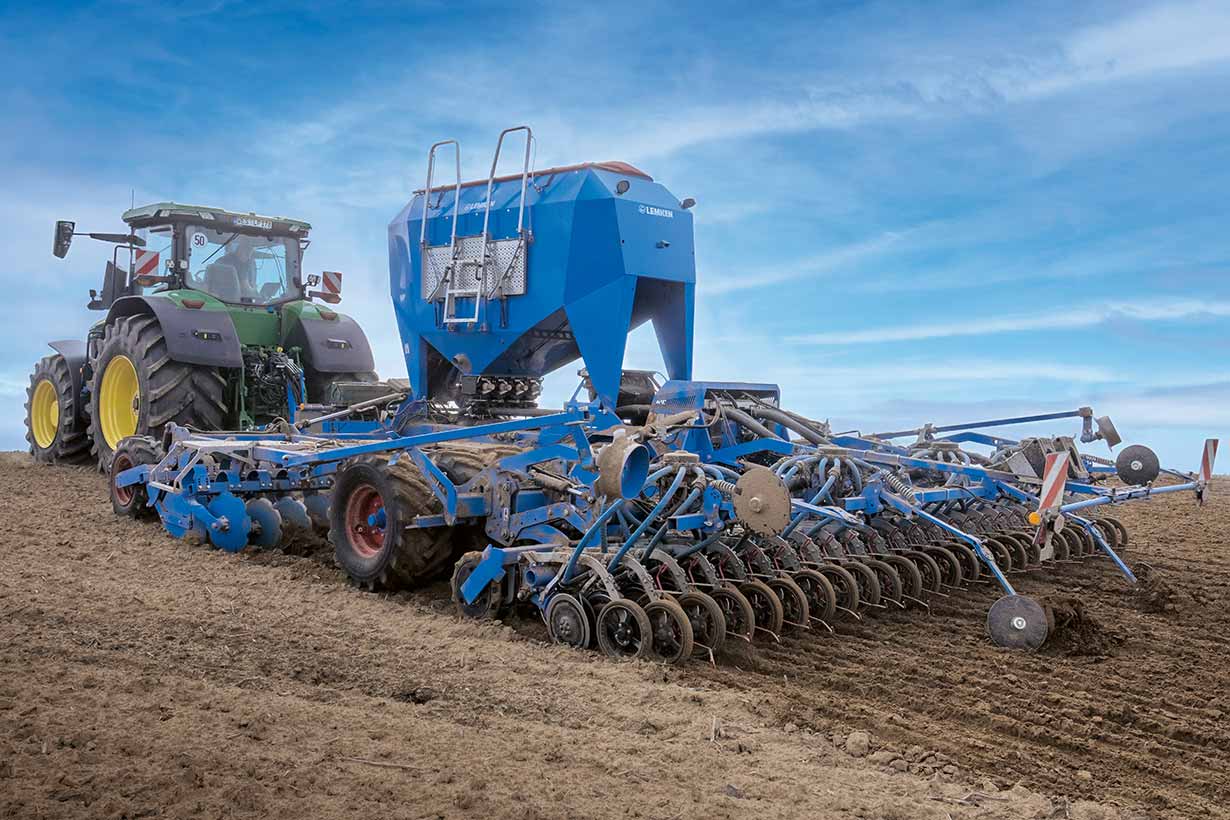The history of drill technology
More than 25 years ago, LEMKEN introduced the Solitair, the first seed drill developed in-house. How did it come about and what became of it?
Agriculture in the 90s
In the 1990s, agriculture paid more and more attention to combining soil cultivation and sowing in one operation. The combination of machines for seedbed preparation and sowing promised the customer:
- significantly greater operator friendliness
- better work quality
- lower labour costs
Until then, LEMKEN's product range had been limited to tillage. With the takeover of the seed drill manufacturer Hassia, an existing programme of mechanical mounted seed drills was added. The introduction of the Solitair pneumatic seed drill, developed in-house, then laid the foundation for significant growth in 1997. Since then, more than 31,000 LEMKEN seed drills have been sold.
These challenges had to be mastered
- The basis is blockage-free seed placement and, at the same time, precise depth placement. Maintaining the placement depth in all tillage methods limits the cost of seed.
- A high field emergence (percentage between sown and emerged seed) makes on-time fertilisation and subsequent crop protection measures more efficient.
- In mulch sowing, the sowing coulters have to cope with organic residues and with a higher working speed than in plough sowing.
- In dry soil conditions, the necessary row pre-consolidation and subsequent pressing of the seed is an important component.
The solution: Unique LEMKEN coulter technology
LEMKEN developed the parallelogram guided double disc coulter with depth control and pressure wheel, which follows a row pre-compacting trapeze packer roller. This configuration combines unrivalled precise placement and perfectly pressed seed. In practical use, the double-disc coulter delivered visibly better results than the previous sowing technology on the market and caught on with farmers. Since then, it has been the central component of LEMKEN drill technology.

Extensive programme
With the development of new markets, the demands on seed drill technology became more diverse. Among many others, the following factors vary significantly depending on the location:
- farm sizes
- climatic conditions
- crop rotations
- cultivation methods
Accordingly, the LEMKEN seed drill programme became more and more diverse in order to meet the requirements of agriculture.
LEMKEN seed drill technology today
Today, farmers have to face growing legal and environmental requirements:
- "farm to fork" strategy
- diverse crop rotation
- biodiversity
- increasing restrictions in fertiliser and crop protection
They require an adapted seed drill technology. Multi-hopper systems offer the advantage of being able to apply and deposit either seed and fertiliser or two different types of seed at the same time.
This is why the Solitair 9+ pneumatic seed drill is available in the double hopper version „DUO“ in two equipment versions with "Single-" or "Double-Shot procedure".
- Single Shot means that two different components are metered separately, mixed before the seed distributor and placed in one row.
- In the "Double-Shot method", two components are metered separately and placed alternately in every second row or together in one row at different placement depths via the double number of distributors.
Solitair DT in the starting blocks
With the Solitair DT universal seed drill, the next generation of drill combinations drill combinations is now being launched with these innovations:
- the new metering
- new working widths
- a new folding concept
- lower weight
Of course, it is also available with a divided hopper, Single Shot and Double Shot.

What does the future hold for seed drills?
LEMKEN is continuously working on the further development of its drill technology. New technologies and processes will be introduced and we can look forward to further groundbreaking developments that will meet the challenges of agriculture today and in the future.
